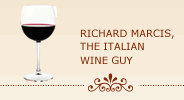More Value-priced Super-Tuscan Wines
I enjoy touring Tuscany and visiting wineries in that beautiful part of Italy. Wines from the Chianti region are among Tuscany’s most famous while the Brunello di Montalcino wines from southern Tuscany are some of the best Italy has to offer, prized for their structure, elegance and longevity.
But another category of Tuscan wine - called Super-Tuscan - has received considerable critical acclaim from critics and consumers alike in recent years and in the process has recharged the entire Italian wine scene.
The Super-Tuscan movement came into being in the early 1970’s when some visionary producers crafted a new type of wine that defied regional traditions and regulatory requirements. These innovative producers utilized non-traditional varieties or innovative vinification protocols - or both - and in the process thumbed their noses at DOC and DOCG requirements. But there was a price to be paid. Since they didn’t play by the rules they couldn’t use the prestigious DOC or DOCG designations and had to label their wines with the less prestigious Vino da Tavola, or “ordinary table wine”, designation.
However, these progressive winemakers crafted some remarkable wines that quickly caught the attention of the world and became recognized as some of Italy's best - and most expensive wines.
The term “Super-Tuscan” came into widespread use as a means of differentiating these wines from the inexpensive and lower-quality wines generally associated with the vino da tavola designation. When the Indicazione Geografica Tipica (IGT) category was created by the Italian authorities in 1992, it quickly became the preferred habitat for Super-Tuscan wines. The IGT designation permitted more flexibility in crafting wines than what was possible under the more rigid requirements of traditional DOC or DOCG designations. The IGT appellation also carried greater prestige than the bottom-shelf vino da tavola designation.
The term “Super-Tuscan” is not an official designation so there are no hard and fast rules governing how Super-Tuscan wines are produced. These wines are in effect proprietary wines created to reflect individual producer’s styles and predilections.
The grape varieties used to creat Super-Tuscans vary considerably from producer to producer. Sangiovese is probably the most common grape used in Super-Tuscans and is frequently combined with international varieties like Cabernet Sauvignon, Merlot and Syrah. Some Super-Tuscans use Sangiovese exclusively or Merlot or Cabernet Sauvignon exclusively. Still others exclude Sangiovese and other Italian varieties altogether and use varying combinations of Merlot, Syrah, Cabernet Sauvignon and other international varieties in crafting Bordeaux-style blends. The blend can be practically anything and producers frequently fine-tune the wines by varying the composition of the blends from year to year.
Today, almost every Tuscan estate produces at least one Super-Tuscan wine and there is a formidable parade of Super-Tuscans with enigmatic names on wine shop shelves. While producers have great flexibility in the names they give to their Super-Tuscan wines, it is a rare Tuscan estate that doesn’t name its wine after some ancestor or family member, some geographic feature of the estate or vineyard or simply on some personal whimsy.
Perhaps the only common denominator for Super-Tuscan wines is price. Most are super expensive, typically ranging from $40 to $100 and above. Some of the more famous Super-Tuscans with wide international appeal, such as Masseto, Flaccianello and Ornellaia, carry price tags well north of $200.
In a previous posting I listed some of my top ten affordable Super-Tuscan wines. Some readers responded that they thought it was a stretch to include wines in excess of $50 - of which there were a few - to be in the “affordable” category. Point taken.The Super-Tuscan wines reviewed below are more conservatively priced, ranging from $16 to $42 with an average price of $29 for the group. Given what Super-Tuscan wines typically sell for in the market today, the wines reviewed below are remarkable bargains on a quality-to-price basis.
The wines are listed alphabetically by producer.
Argiano, “NC” Non Confunditur Rosso Toscana 2010 (about $20)
Known affectionately by its initials “NC” - which stand for “Non Confunditur”, a Latin term taken from the crest of the Argiano estate - this impressive Super-Tuscan is a blend of traditional French and 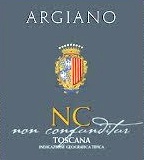 Tuscan varietals. Specifically, the 2010 NC is a blend of 50 percent Sangiovese and 25 percent each Cabernet Sauvignon and Merlot. The Cabernet Sauvignon adds concentrated fruit and tannins while the Merlot provides sweet flavors that engage the acidity and earthiness of the Sangiovese. The NC is an elegant and delicious wine that has already evolved and is ready to drink now but will also age gracefully in the cellar for several more years.
Tuscan varietals. Specifically, the 2010 NC is a blend of 50 percent Sangiovese and 25 percent each Cabernet Sauvignon and Merlot. The Cabernet Sauvignon adds concentrated fruit and tannins while the Merlot provides sweet flavors that engage the acidity and earthiness of the Sangiovese. The NC is an elegant and delicious wine that has already evolved and is ready to drink now but will also age gracefully in the cellar for several more years.
Brancaia, “Tre” IGT Rosso Toscana 2010 (about $16)
“Tre” is Italian for “three” and in this case refers to the three grape varieties - Sangiovese, Merlot and Cabernet Sauvignon - utilized in the blend and harvested from Brancaia’s three Tuscan estates in 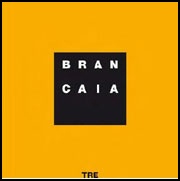 Castellina in Chianti, Radda in Chianti and Grosseto in Maremma. The blended wine is aged for 12 months in large oak barrels.
Castellina in Chianti, Radda in Chianti and Grosseto in Maremma. The blended wine is aged for 12 months in large oak barrels.
The mouthfeel is velvety and rich without being ponderous because the fruit flavors are balanced with good acidity. Brancaia’s Tre is the least expensive wine in this list of Super-Tuscans but manages to pull off a delicate balancing act of providing a complex and delicious bottle of wine at a very modest price.
Castello Banfi, “Cum Laude” 2009 (about $33)
Castello Banfi is a prominent estate and winery located near the picturesque hill-top town of Montalcino, the center of Tuscany’s prestigious Brunello zone. With over 2,400 acres of prime land under 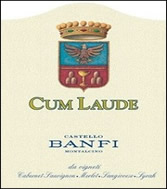 vine, it is a large estate by any measure but especially by Tuscan standards where small to medium-size family vineyards and wineries are the norm. It produces and markets a wide range, literally dozens, of high-quality red, white and dessert wines at all price points.
vine, it is a large estate by any measure but especially by Tuscan standards where small to medium-size family vineyards and wineries are the norm. It produces and markets a wide range, literally dozens, of high-quality red, white and dessert wines at all price points.
The estate’s Cum Laude (Latin for “with honors”) is a blend of Cabernet Sauvignon, Merlot, Sangiovese and Syrah. These four red varieties were utilized because after extensive research they were identified as the varieties best suited for Banfi’s Montalcino vineyards.
The four varieties are fermented separately and then transferred to small oak barrels (barriques) where they age for approximately 6 months. They are then blended and the wine is further aged in wooden casks for an additional 6 months. The wine is finally bottled and spends an additional 6 months resting in the bottle prior to release for sale.
This full-bodied Super-Tuscan has a lot going for it. Concentrated dark fruit flavors, good tannic structure and a long, concentrated finish make Cum Laude a welcome addition to any hearty dinner table.
Mastrojanni, “San Pio” Toscana IGT 2009 (about $26)
The Mastrojanni (mas’ tro yahn’ nee) winery is located in southern Tuscany just southeast of Montalcino. The winery has been in operation since 1975 when successful lawyer Gabriele Mastrojanni purchased the San Pio estate and planted the first Sangiovese vines there. It gradually became one of the Montalcino area’s premier producers on the strength of the estate’s rich, full-bodied Brunello wines much prized by wine enthusiasts around the world. In 2008, the winery was acquired by the Gruppo Illy holding company, the famous Italian coffee and espresso company known throughout the world, which kept the winery’s name as well as the estate’s emphasis on quality and its traditional approach to winemaking.
rich, full-bodied Brunello wines much prized by wine enthusiasts around the world. In 2008, the winery was acquired by the Gruppo Illy holding company, the famous Italian coffee and espresso company known throughout the world, which kept the winery’s name as well as the estate’s emphasis on quality and its traditional approach to winemaking.
The estate’s San Pio IGT is 80 percent Cabernet Sauvignon and 20 percent Sangiovese. The wine is aged in a combination of large and small oak barrels for 18 months and spends another 6 months in the bottle prior to release for sale.
This classy wine is medium to full-bodied with rich, ripe plum and black currant flavors and smooth tannins. It is a fine and exceptionally well-priced Super-Tuscan. This wine could easily become your next “go-to” wine.
Petrolo, “Torrione” Tuscany IGT 2006 (about $42)
Tenuta Petrolo is located in the Arno Valley just a short distance north of the Chianti Classico zone and grows mainly Merlot and Sangiovese grapes. With 76 acres planted under vine, the Petrolo estate has a relatively small wine footprint but a super-sized reputation for growing some of Tuscany’s - and Italy’s - most intriguing and successful wines. While known primarily for its Galatrona, an amazing wine made entirely of Merlot, Petrolo’s Torrione is one of Tuscany’s best pure Sangiovese wines. 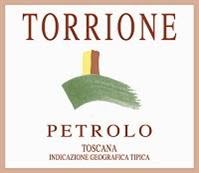
The estate’s Sangiovese vines are carefully tended and severely pruned so that the yield per plant is kept very low which facilitates maximum ripening and increases the grape’s quality of fruit. The grapes are hand selected at harvest.
After fermentation, the wine is aged in a combination of new and used French oak barriques for 15 months prior to bottling. The wine then rests for an additional 6 months in the bottle prior to release for sale.
This wine is rich, loaded with blackberry and plum fruit flavors and has a good tannic backbone. This meticulously-produced wine from a top-notch producer shows all the charm that Tuscany has to offer.
Poggio al Tesoro, “Sondraia” Bolgheri Rosso 2008 (about $41)
Although Bolgheri is a small village in Tuscany’s coastal Maremma region, it is home to some of Italy’s greatest red wines, wines with boldface names like Sassicaia, Guado al Tasso, Le Macchiole and Orneliaia, to name just a few.
Poggio al Tesoro was created in 2001 as a joint venture between two prominent players in the Italian wine industry – the Allegrini family, a prestigious wine estate based in Verona in northeastern Italy, and Leonardo LoCascio of the U.S.-based wine import firm W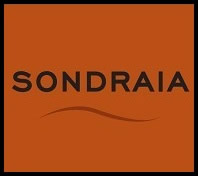 inebow. They utilized the services of the prominent, Tuscan consulting winemaker Alberto Antonini to assist with the winemaking. The estate now has about 75 acres under vine. The estate’s first production vintage was in 2003 and they’ve been going full speed ever since.
inebow. They utilized the services of the prominent, Tuscan consulting winemaker Alberto Antonini to assist with the winemaking. The estate now has about 75 acres under vine. The estate’s first production vintage was in 2003 and they’ve been going full speed ever since.
Sondraia takes its name from the estate’s largest vineyard and is a blend of 65 percent Cabernet Sauvignon, 25 percent Merlot and 10 percent Cabernet Franc. The wine is fermented in stainless steel and then aged in French oak barriques for 18 months. It then spends another 9 months in the bottle prior to release for sale.
Like top-tier Super-Tuscans, the 2008 Sondraia has a dark, intense, ruby red color with a slight purple edge. It is rich and warm with dark fruit flavors, silky tannins and a generous, persistent finish. This is a wine you would be proud to serve to any discerning dinner guest.
Querciabella, “Mongrana” Maremma Toscana 2009 (about $20)
Agricola Querciabella (kwer’ cha bel’ la) is a prominent winery in the Super-Tuscan constellation that produces a number of premium Super-Tuscan wines. The estate’s flagship wine, Camartina, has achieved the wine world’s equivalent of rock star status with a devoted legion of fans accompanied by nearly insatiable demand for prod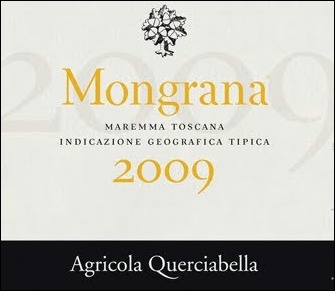 uct.
uct.
The estate has also garnered favorable attention for its application of biodynamic principles to winemaking. The estate has practiced chemical-free farming since 1988 and both its vineyard management and wine making practices adhere to strict biodynamic standards.
This is a terrific Super-Tuscan blend of 50% Sangiovese with 25 percent each Merlot and Cabernet Sauvignon. Although Querciabella is located in the heart of the Chianti Classico zone, the grapes for Mongrana are sourced from the estate’s vineyards in the Maremma region on Tuscany’s western coast.
The 2009 Mongrana drinks beautifully. It is fruity, medium-bodied with good acidity and an array of ripe red fruit flavors. It’s a great bottle of wine to have around for informal get-togethers as well as more formal occasions involving complicated food pairings.
Tenuta dell’Ornellaia, “Le Volte” Toscana IGT 2010 (about $26)
Tenuta dell’Ornellaia is one of the most storied wineries in Tuscany’s Bolgheri region. In 1985 the estate produced the first vintage of its flagship wine, Ornellia, a Super-Tuscan that became an overnight international success. The winery followed with other Super-Tuscan wines like Masseto and La Serra Nuove that also met with great international acclaim.
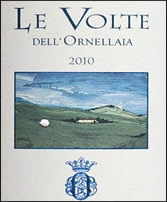 The Le Volte is Tenuta dell’Ornellaia’s most approachable and least expensive Super-Tuscan. But inexpensive in this case doesn’t mean humdrum or mediocre. This wine is subject to the same exacting standards and attention to detail as are the estate’s other highly regarded wines.
The Le Volte is Tenuta dell’Ornellaia’s most approachable and least expensive Super-Tuscan. But inexpensive in this case doesn’t mean humdrum or mediocre. This wine is subject to the same exacting standards and attention to detail as are the estate’s other highly regarded wines.
Continuing the traditional use of primarily international varieties, the 2010 Le Volte is a blend of 50 percent Merlot, 30 percent Sangiovese and 20 percent Cabernet Sauvignon. The grapes are fermented separately, then combined and aged in 2 to 4 year-old French oak barriques for 10 months to improve the structure and soften the tannins. It is structured and complex with plenty of fruit character and silky tannins. It’s a delicious wine from a pedigreed estate at a great price.
Tua Rita, “Perlato del Bosco” Rosso Toscano 2009 (about $29)
Tua Rita is a family-run winery located in Suvereto, a small, ancient town in the Tuscan province of Livorno, approximately 15 km south of Bolgheri. Some of the wines produced by various estates on this marvelous stretch of land on the Ligurian coastline are among the most famous and sought-after in all Italy.
Although Rita Tua and her husband, Virgilio Bisti, bought their 38 acres of prim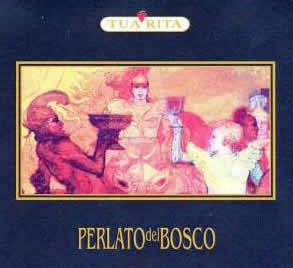 e land in 1984 it wasn’t until 1992 that they began producing and bottling their own wines for sale. But right from the start their wines garnered rave reviews and subsequent releases only certified their reputation as one of Tuscany’s - and Italy’s - most prestigious wineries. Their two premier wines - Redigaffi, a 100 percent Merlot, and Giusto di Notri, a Bordeaux-style blend - have achieved cult-like status and consequently are very expensive and hard to find.
e land in 1984 it wasn’t until 1992 that they began producing and bottling their own wines for sale. But right from the start their wines garnered rave reviews and subsequent releases only certified their reputation as one of Tuscany’s - and Italy’s - most prestigious wineries. Their two premier wines - Redigaffi, a 100 percent Merlot, and Giusto di Notri, a Bordeaux-style blend - have achieved cult-like status and consequently are very expensive and hard to find.
Initially released in 1992, the Perlato del Bosco is Tua Rita's most accessible and least expensive wine. It is a blend of 60 percent Sangiovese and 40 percent Cabernet Sauvignon. The grapes are harvested in early September, vinified separately in stainless steel tanks, combined and then aged for fifteen months in new French oak barriques.
This Super-Tuscan is complex, packed with ripe black berry and currant flavors and has a good tannic structure that foretells a long cellar life for the wine - that is, if you can handle the wait. The wine should be opened at least 2 hours prior to serving and decanted to remove sediment.
Uccelliera, “Rapace” Rosso Toscana IGT (about $35)
The Uccelliera (oot chel’ lee ehr ah) estate is located in southern Tuscany in the town of Castelnuovo dell’Abate, southeast of Montalcino. It is actually part of the Montalcino zone and the estate, like other neighboring wineries, also produces some Brunello di Montalcino wines. It is a small estate with only 15 acres under vine. Its small size facilitates a hands-on, artisanal approach to winemaking. The winery also follows organic farming principles and practices in the production of its wines. Uccelliera is one of those under-the-radar Tuscan estates that produces elegant and noteworthy wines.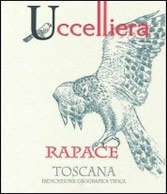
The 2009 Rapace is a blend of 70 percent Sangiovese, 20 percent Merlot and 10 percent Cabernet Sauvignon. The Sangiovese grapes are sourced from vineyards that could otherwise be used to produce Brunello di Montalcino. The wine is aged in French oak barriques for 18 months, then bottled and aged an additional 6 months prior to release for sale.
The addition of small amounts of Merlot and Cabernet Sauvignon add soft tannins and structure to the blend. The wine is rich, supple and complex with dark fruit flavors and spice notes balanced with good acidity and muted tannins.
It is a remarkable wine at a very reasonable price. The winery is small and production is limited so when you see some Rapace in a wine shop, be sure to stock up for those special occasion dinners.
Note – prices indicated are averages of retail prices in the local market at the date of this posting. Individual prices will vary from store to store and some wines may be on sale so prices may be lower than indicated above. My recommendation is to call to check on price and availability before making the trip.
©Richard Marcis
June 6, 2013
Return to italian wine reviews

